Photo opportunities while Helping Nature - David Askham (2024)
20th August 2024
In: Articles
The world is experiencing changes to its climate on an unprecedented scale for current generations. Modern communications bring this fact into our lives instantly and most vividly, as some island nations face drowning, countries get flooded and historic, centuries-old European towns, are swept away as a result of excessive prolonged rainfall and tsunamis. Birds, bees and other winged pollinators such as butterflies and moths are all in serious decline, threatening the production of global food supplies. This is why I decided to allow one of my grass lawns to be a candidate, a few years ago, for 'No mowing in May'. Only access paths are cut. Grasses and a myriad of wild flowers thrive under this thoughtful regime and provide a natural habitat for seldom seen winged pollinators. The tallest plants in our mixed-species lawn grow to nearly two meters. It is a glorious sight, especially at sunrise or shortly before sunset when the sun is low in the sky. Or in the final weeks before it is scythed to the ground and normal mowing resumes.
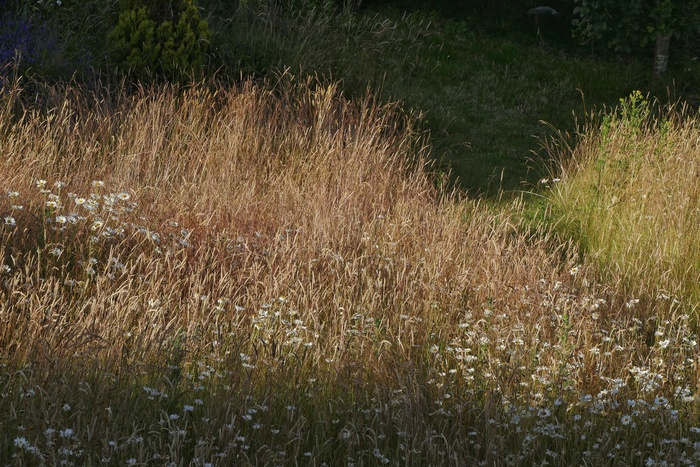
Helping nature, in the way mentioned above, is a 'win-win' situation. You save time and energy otherwise expended on weekly mowing; save fossil fuels in energy-fueled mowing, and provide an ideal habitat for nurturing and observing wildlife. Plants which flower and provide a glorious array of colours, eventually produce seed for future generations to enjoy, and food for migrant wild birds who swing as they wing their way between swaying stems, thus betraying their presence. We have even seen a hedgehog, late in evening, starting his routine patrol on the fringes of our unmown lawn, following the paths by choice. So where are the photo opportunities in this new natural world?
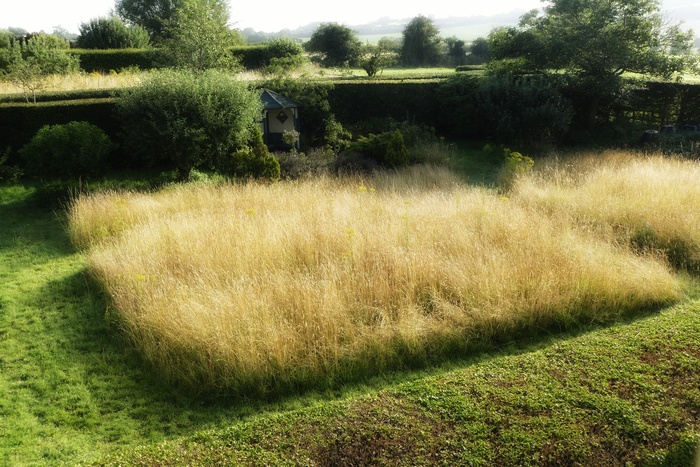
Photographic opportunities
It is difficult to imagine what the photo opportunities might be by avoiding lawn-mowing when plants are growing strongly. At first you imagine a progressively unkempt garden. Yet once you see finely mown grass paths, you begin to appreciate that someone cares. For example, cutting a curvaceous path through the middle of the unmown lawn makes for more interesting garden landscape pictures.
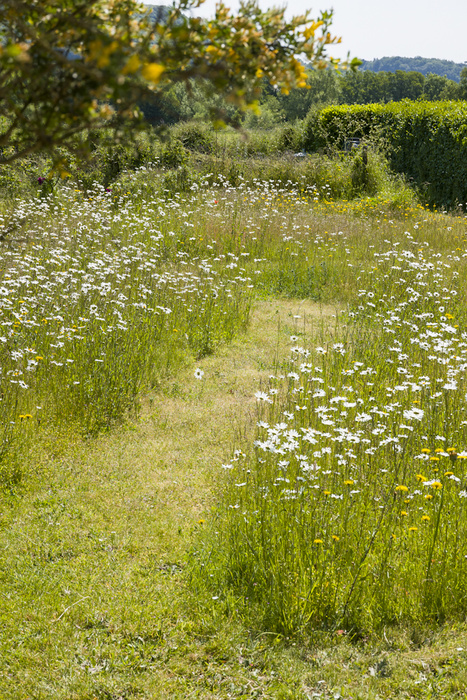
While ambling along this pathway you are suddenly aware of a hitherto unseen natural world when peering into the growing base of a mixed wild flower world, created by nature. Small moths, which come alive at night, slumber in daytime unless disturbed by intruders. Their natural world might not have existed had the gardener dutifully cut the lawn regularly. You instantly see a benefit to nature by allowing the lawn to grow. Amazingly, most of the grass continues to grow, often to head height, and flower in an often unseen way. The stems change colour as the crop ripens, taking on a variety of warm tones to delight the eyes of a photographer.
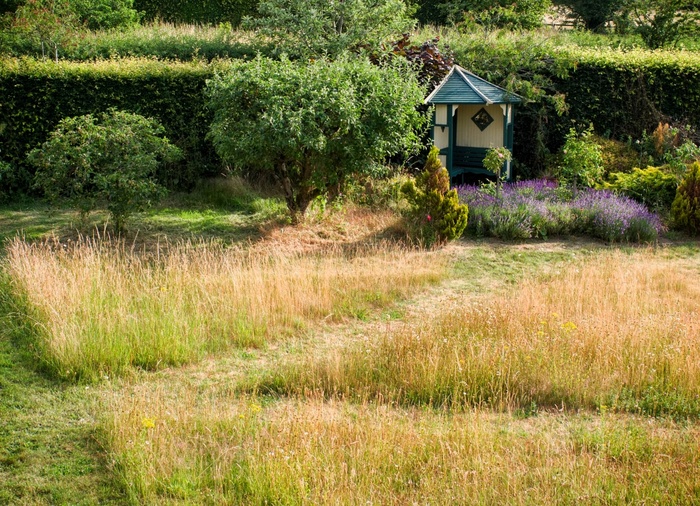
Almost any camera can be used for this genre of home-based photography. Looking in my archives I note that my earliest pictures of my natural uncut lawns were taken with my venerable Leica M8 (Not so old at the time of capture) But my Leicas X-Vario, CL and V-Lux have predominated in more recent years. The versatility of my V-Lux zoom lens is particularly useful in composing garden landscapes from upper rooms in our house.
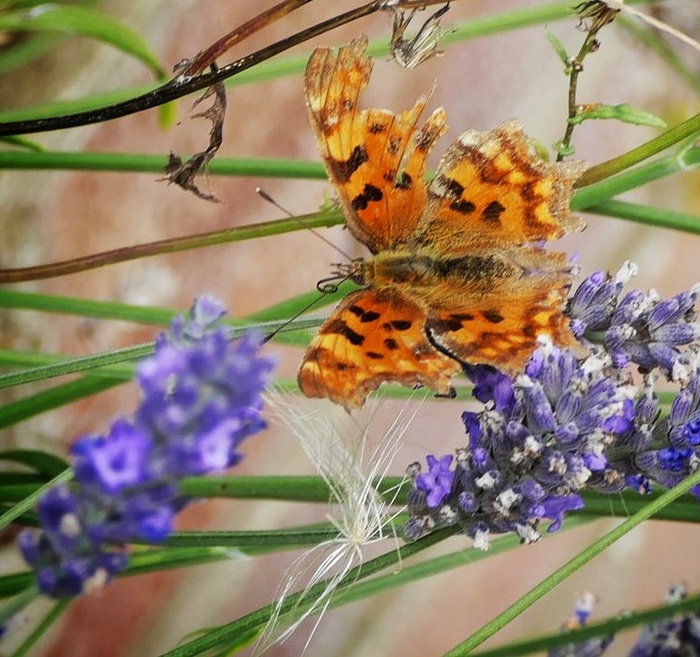
Apart from photographic opportunities, there are distinct psychological benefits deriving from this practice. Just looking and watching the natural world has a clear and proven benefit for our mental wellbeing. You are suddenly in a peaceful place, sharing space and time with tiny creatures and beautiful plants that otherwise would not be there or noticed.
When I open the curtains early on a summer morning, I catch sight of this wonderful peaceful place and am ready to face the world once again.
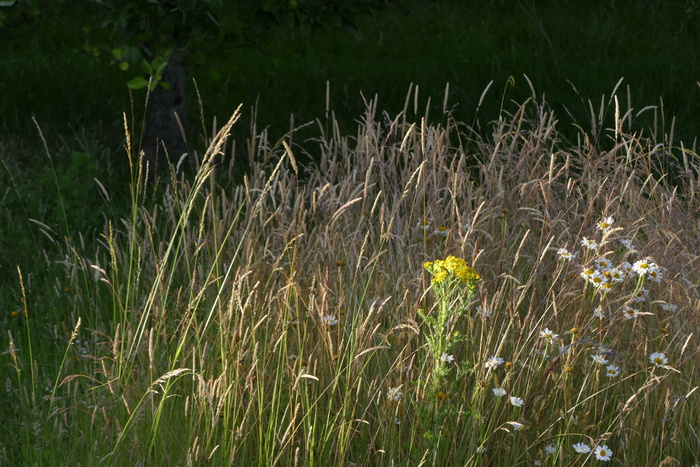
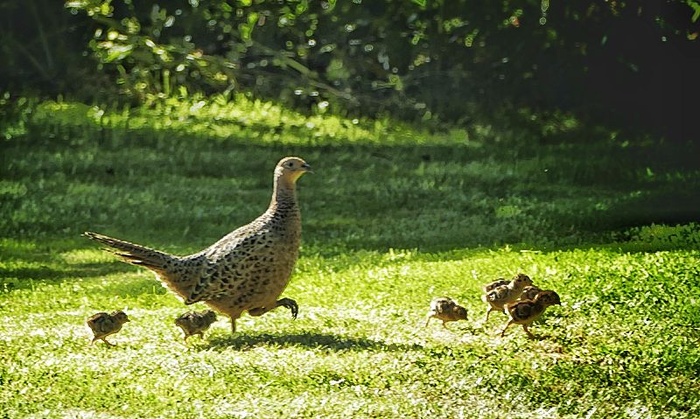
A final note of caution. Do not expect a bowling green quality surface when you first cut your nature's paradise lawn in late summer! Just feast your eyes on your memorable photographs that you captured during the wilderness weeks, and think of your contribution to the natural world. The birds, bees and butterflies will multiply, thank you and hopefully, return next year.

Helping nature, in the way mentioned above, is a 'win-win' situation. You save time and energy otherwise expended on weekly mowing; save fossil fuels in energy-fueled mowing, and provide an ideal habitat for nurturing and observing wildlife. Plants which flower and provide a glorious array of colours, eventually produce seed for future generations to enjoy, and food for migrant wild birds who swing as they wing their way between swaying stems, thus betraying their presence. We have even seen a hedgehog, late in evening, starting his routine patrol on the fringes of our unmown lawn, following the paths by choice. So where are the photo opportunities in this new natural world?

Early morning landscape
Photographic opportunities
It is difficult to imagine what the photo opportunities might be by avoiding lawn-mowing when plants are growing strongly. At first you imagine a progressively unkempt garden. Yet once you see finely mown grass paths, you begin to appreciate that someone cares. For example, cutting a curvaceous path through the middle of the unmown lawn makes for more interesting garden landscape pictures.

A grass pathway through wild flowers and grasses.
While ambling along this pathway you are suddenly aware of a hitherto unseen natural world when peering into the growing base of a mixed wild flower world, created by nature. Small moths, which come alive at night, slumber in daytime unless disturbed by intruders. Their natural world might not have existed had the gardener dutifully cut the lawn regularly. You instantly see a benefit to nature by allowing the lawn to grow. Amazingly, most of the grass continues to grow, often to head height, and flower in an often unseen way. The stems change colour as the crop ripens, taking on a variety of warm tones to delight the eyes of a photographer.

Almost any camera can be used for this genre of home-based photography. Looking in my archives I note that my earliest pictures of my natural uncut lawns were taken with my venerable Leica M8 (Not so old at the time of capture) But my Leicas X-Vario, CL and V-Lux have predominated in more recent years. The versatility of my V-Lux zoom lens is particularly useful in composing garden landscapes from upper rooms in our house.

Spotted on the fringes of the lawn. I caught this now rare Comma butterfly, with its fragile wings damaged from extricating itself from tangled plant stems
Apart from photographic opportunities, there are distinct psychological benefits deriving from this practice. Just looking and watching the natural world has a clear and proven benefit for our mental wellbeing. You are suddenly in a peaceful place, sharing space and time with tiny creatures and beautiful plants that otherwise would not be there or noticed.
When I open the curtains early on a summer morning, I catch sight of this wonderful peaceful place and am ready to face the world once again.


A pheasant and her new brood of chicks emerges from her well-hidden nest
A final note of caution. Do not expect a bowling green quality surface when you first cut your nature's paradise lawn in late summer! Just feast your eyes on your memorable photographs that you captured during the wilderness weeks, and think of your contribution to the natural world. The birds, bees and butterflies will multiply, thank you and hopefully, return next year.